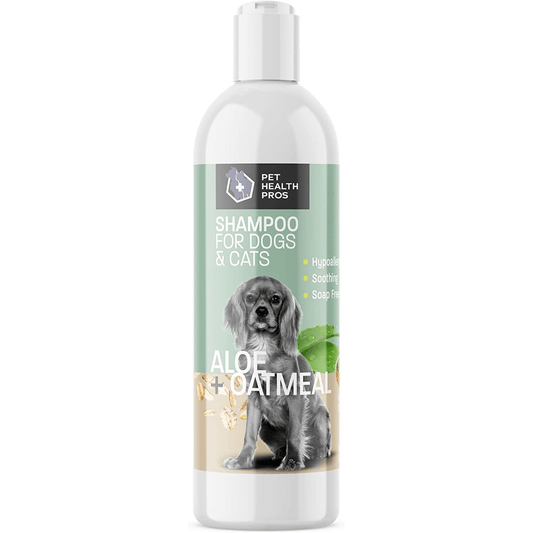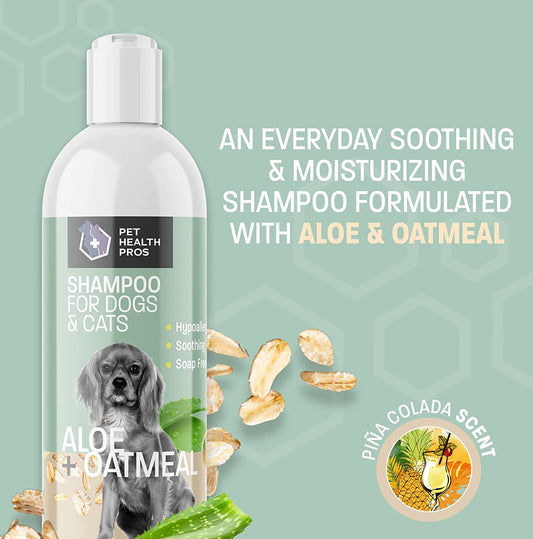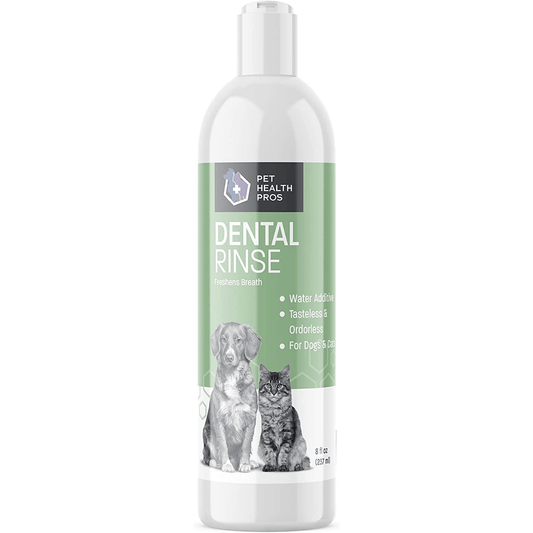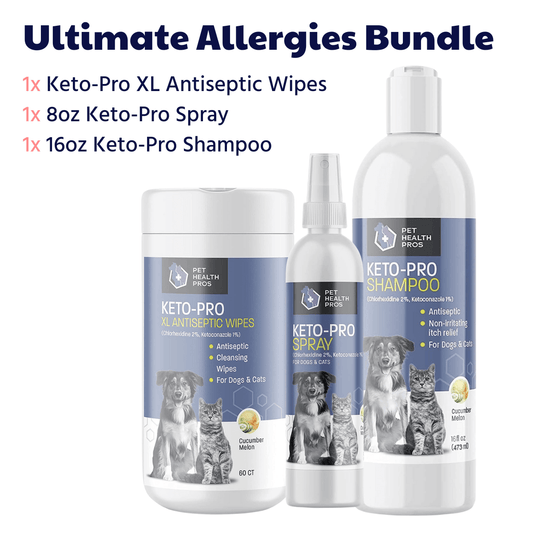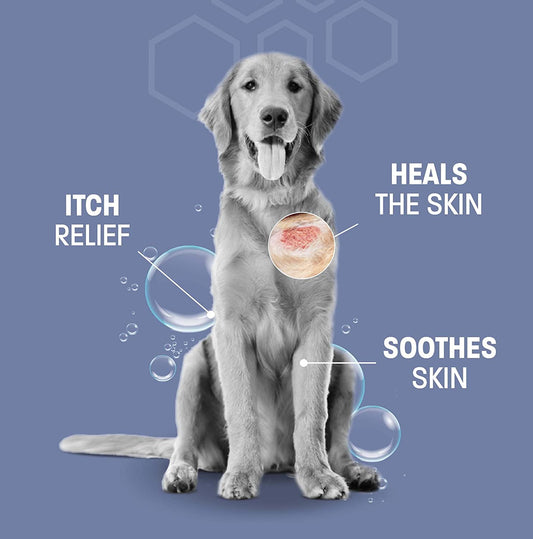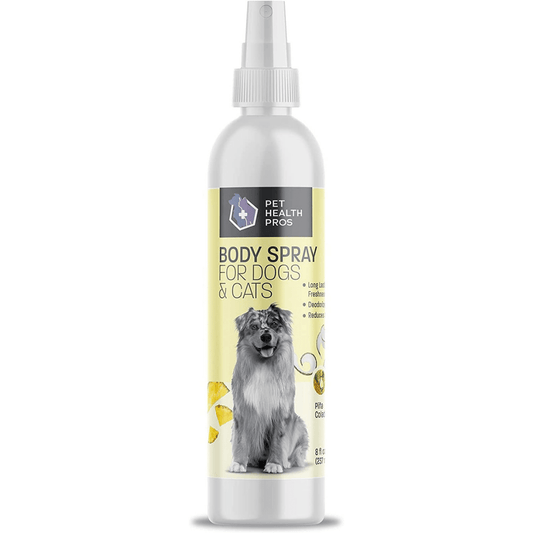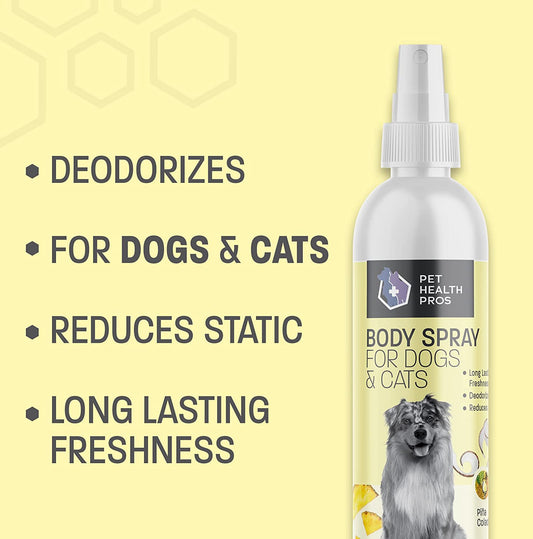Ever caught your dog gnawing on your favorite shoes or the couch again? Yeah, it's frustrating, right? Dogs chew for all sorts of reasons—boredom, teething, or just because they can. But here's the thing: you don't have to put up with it. Making your own anti-chew spray can save your stuff and keep your pup safe. It's easy, cheap, and you'll know exactly what's in it. Let's dive into how you can whip up a DIY anti-chew spray for dogs.
Key Takeaways
- Dogs chew for various reasons like boredom or teething.
- DIY anti-chew sprays are a cost-effective solution.
- Using natural ingredients ensures safety for pets.
- Proper application is crucial for effectiveness.
- Training should complement the use of sprays.
Understanding the Need for an Anti Chew Spray
Why Dogs Chew on Household Items
Dogs chew on things for a bunch of reasons. Sometimes they're just bored or anxious, and other times they're teething or trying to get your attention. Chewing can also be a natural way for them to explore their surroundings. Understanding the root cause of your dog's chewing behavior is key to addressing it effectively.
Common Dangers of Chewing
When dogs chew on household items, it can lead to some serious issues. They might swallow something harmful, choke, or even damage their teeth. Plus, there's the risk of them chewing on electrical cords, which is super dangerous. Here's a quick list of common dangers:
- Ingestion of toxic substances
- Choking hazards from small objects
- Dental damage from hard items
- Risk of electrocution from cords
Benefits of Using an Anti Chew Spray
An anti chew spray can be a real lifesaver. It helps keep your stuff safe and teaches your dog what's off-limits. These sprays are usually made with bitter-tasting ingredients that dogs find unpleasant. Over time, your dog learns to avoid the sprayed areas. Using an anti chew spray can be a great addition to your pet care routine, especially when combined with Pet Genius for tailored support and advice.
An anti chew spray isn't just about protecting your belongings; it's about guiding your dog towards better behavior and ensuring their safety.
Essential Ingredients for a DIY Anti Chew Spray
Natural Ingredients to Consider
Creating a homemade anti-chew spray for your dog involves using natural, non-toxic ingredients that are safe for pets and effective in deterring them from chewing on household items. Apple cider vinegar is a popular choice due to its strong taste and smell, which dogs typically dislike. Lemon juice is another option, providing a citrusy scent that can keep dogs away. Cayenne pepper, though used sparingly, can add a spicy element that further discourages chewing.
Safety Precautions When Choosing Ingredients
When making your own spray, it's crucial to ensure that all ingredients are safe for your pet. Avoid any substances that might cause allergic reactions or irritate your dog's skin. Always start with a small amount to test your dog's reaction before applying it more broadly. Remember, the goal is to deter chewing, not to harm your pet.
Where to Source Ingredients
Most of the ingredients needed for a DIY anti-chew spray can be found in your kitchen or at your local grocery store. Apple cider vinegar, lemon juice, and cayenne pepper are common household items. If you're looking for organic or specialty ingredients, health food stores or online retailers might have what you need.
Crafting your own anti-chew spray is not only cost-effective but also allows you to control exactly what goes into the product, ensuring it's safe and tailored to your pet's needs. However, be prepared for trial and error as you find the right combination that works for your dog.
Step-by-Step Guide to Making Your Own Anti Chew Spray
Before diving into the creation of your spray, gather everything you need. Start with a clean spray bottle—this will be your primary tool. Next, you'll need key ingredients like bitter apple, water, and white vinegar. Bitter apple is a popular choice due to its unpleasant taste for dogs. Make sure you have a measuring cup and spoon handy as well.
Mixing the Ingredients
Once you've got everything together, it's time to mix. Follow these simple steps:
- Pour one cup of water into your spray bottle.
- Add two tablespoons of white vinegar.
- Include a few drops of bitter apple extract.
Give the bottle a good shake to mix everything thoroughly. The vinegar and bitter apple create a taste dogs typically avoid.
Proper Storage Techniques
Storing your anti-chew spray correctly is crucial for maintaining its effectiveness. Keep it in a cool, dry place, away from direct sunlight. A cupboard or pantry works well. Ensure the bottle is tightly sealed to prevent any spills or evaporation. Remember to shake the bottle before each use to keep the ingredients well mixed.
Making your own anti-chew spray is a straightforward and cost-effective way to protect your belongings from your dog's chewing habits. With just a few household items, you can create a deterrent that helps train your pet to focus on more appropriate chewing options.
How to Apply the Anti Chew Spray Effectively
Identifying Problem Areas
Before you even start spraying, you need to figure out which spots your dog loves to chew. Look around your home for signs of gnawing or bite marks—maybe it's the corner of a coffee table or the edge of a favorite rug. Once you know the hot spots, you can focus your efforts there. This not only saves you time but also ensures the spray isn't wasted on areas that don't need it.
Correct Application Methods
When it comes to applying the spray, technique matters. Shake the bottle well to mix the ingredients thoroughly. Hold the spray about 6-12 inches away from the surface and give it a good coating. Make sure to cover the entire area evenly. Avoid spraying directly onto your dog or any other pets; it's meant for surfaces only. Let the spray dry completely before letting your dog back into the area to avoid any contact with wet surfaces.
Frequency of Application
The frequency of applying the anti-chew spray can depend on how persistent your dog is. Initially, you might need to apply it daily, especially if your dog is a determined chewer. Over time, as your dog learns to avoid the sprayed areas, you can reduce the frequency. Keep an eye on the spots to see if your dog tests them again, and reapply as needed. Consistency is key to making this work.
Using an anti-chew spray can be a great way to protect your home from your dog's chewing habits, but remember, it's just one piece of the puzzle. Pair it with training and stimulation for the best results.
Training Your Dog Alongside Using the Spray
Positive Reinforcement Techniques
Training your dog isn't just about stopping bad behavior; it's about encouraging good behavior too. Positive reinforcement is a great way to teach your dog what you want them to do. Rewarding your dog with treats, praise, or playtime when they avoid chewing on household items can be very effective. Use rewards immediately after the desired behavior so your dog makes the connection.
Consistency in Training
Consistency is key when it comes to training. Make sure everyone in the household is on the same page with the rules and commands. If your dog is allowed on the couch sometimes, but not others, it can be confusing. Stick to a routine and be patient. Training takes time and persistence.
Monitoring Progress
Keep an eye on how your dog is doing with the new training methods and the anti-chew spray. Regularly check the areas you've treated with spray to see if your dog is still trying to chew on them. If one method isn't working, don't be afraid to try something new. Remember, each dog is unique, and what works for one might not work for another.
Training your dog requires patience and understanding. It's not just about stopping bad habits but also about building a bond with your pet.
Troubleshooting Common Issues with DIY Sprays
Addressing Ineffectiveness
Sometimes, your homemade anti-chew spray might not work as expected. This can be super frustrating, especially after putting in the effort to make it. Here are some things to consider:
- Concentration: Ensure the ingredients are mixed in the right proportions. Too much water can dilute the effectiveness.
- Ingredients: Check if you used the right ingredients. Some dogs might not react to certain deterrents.
- Application: Make sure you’re applying the spray correctly. It should cover the areas your dog loves to chew.
If your spray isn't working, try adjusting the formula or the way you apply it. Every dog is different, so it might take a bit of trial and error.
Dealing with Unpleasant Odors
A common issue with DIY sprays is the smell. While it should deter dogs, it shouldn’t make your home unbearable. Here’s how to manage it:
- Ventilation: Use the spray in well-ventilated areas to help disperse strong odors.
- Essential Oils: Consider adding a few drops of pet-safe essential oils to improve the scent.
- Testing: Always test a small area first to see how the smell settles in your home.
Ensuring Pet Safety
Safety is crucial when making DIY sprays. You want to deter your dog from chewing, not harm them. Here’s what to keep in mind:
- Non-toxic Ingredients: Make sure all ingredients are safe for pets. Avoid anything that could cause irritation or harm.
- Proper Storage: Store the spray out of reach of pets and children.
- Observe Reactions: Watch your dog’s behavior after using the spray. If they show signs of discomfort, stop using it immediately.
Exploring Alternative Solutions to Chewing Problems
Chew Toys and Their Benefits
Chew toys are more than just playthings for dogs; they are essential tools to keep them engaged and mentally stimulated. Dogs have an innate need to chew, and providing them with appropriate toys can help satisfy this urge. Chew toys come in various shapes, sizes, and textures, which can cater to different chewing preferences and strengths. Some toys are designed to be durable for aggressive chewers, while others are softer for gentle gnawing. Additionally, many chew toys offer dental benefits, helping to clean teeth and massage gums as your dog plays.
Professional Training Options
Sometimes, the chewing problem might be a bit more complicated and might require professional help. Dog trainers can provide tailored advice and training techniques to address specific behavioral issues. They use positive reinforcement strategies to teach dogs what is acceptable to chew and what isn't. Professional trainers can also assist in identifying any underlying issues, such as anxiety or boredom, that may be contributing to the chewing behavior.
Behavioral Modification Techniques
Behavioral modification is another approach that can be effective in curbing unwanted chewing. This involves changing the dog's environment or routine to reduce the likelihood of chewing. For example, increasing the amount of physical exercise or mental stimulation can help reduce boredom-induced chewing. It's also important to remove any items that the dog might be tempted to chew on and replace them with appropriate alternatives. Consistency is key in behavioral modification, as dogs thrive on routine and clear expectations.
When tackling chewing issues, it's crucial to remember that patience and persistence are your best friends. Every dog is unique, and what works for one might not work for another. Keep trying different strategies until you find the right fit for your furry friend.
When it comes to chewing issues, there are many different ways to help your pet. From special toys to tasty treats, you can find solutions that fit your pet's needs. Don't wait to make your furry friend happy! Visit our website to explore all the options we have for you and your pet's health.
Wrapping It Up: Your Homemade Anti-Chew Spray
So there you have it, a simple guide to making your own anti-chew spray for your furry friend. It's not rocket science, but it does take a bit of patience and trial and error. Remember, every dog is different, so what works for one might not work for another. Keep an eye on your pup's reaction and adjust the ingredients if needed. Making your own spray can save you some cash and give you peace of mind knowing exactly what's in it. Plus, it's a fun little project that can help strengthen the bond between you and your dog. Give it a try and see how it goes!
Frequently Asked Questions
Why do dogs tend to chew on things around the house?
Dogs often chew on household items because they are bored, teething, or exploring their environment. Chewing helps them relieve stress and keep their teeth clean.
What are the risks if my dog chews on random stuff?
When dogs chew on things they shouldn't, they could swallow harmful objects, choke, or damage their teeth. It's important to keep dangerous items out of their reach.
How does an anti chew spray help my dog?
An anti chew spray makes things taste bad, so dogs don't want to chew on them. It's a simple way to protect your stuff and teach your dog what not to chew.
What ingredients should I use for a safe DIY anti chew spray?
You can use natural ingredients like vinegar, citrus, or apple cider vinegar. Always make sure the ingredients are safe for pets and won't harm your dog.
How do I apply the anti chew spray correctly?
Spray it on the areas where your dog tends to chew. Be sure to reapply it regularly, especially if it wears off or after cleaning.
Can training work together with using the spray?
Yes, using the spray along with training can be very effective. Reward your dog for good behavior and be consistent with your training to see the best results.

